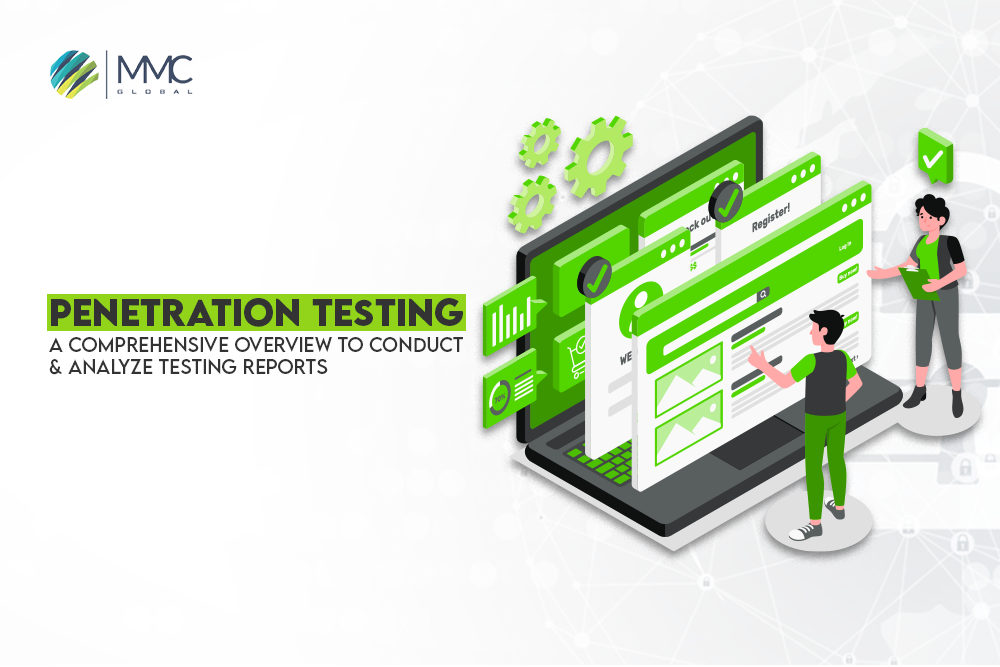Digital Transformation redefines business operations in multiple ways, such as how to regulate exceptional customer support in a modernized way. Almost every main business function needs digitalization to help you grow faster. Business owners adopt digital transformation strategies to generate profitable outcomes from all business resources.
There are 4 pillars of digital transformation identified to provide the direction of where you should start to get maximum success. These 4 areas included IT infrastructure, digitalizing operations, digital marketing, and digital business. To summarize these four pillars, a digital transformation environment has been formed.

IT Infrastructure
Mainly, the transformation starts with including IT services that enhance the technological perspective. The first step to revamping business infrastructure into IT infrastructure is discovering its need. By taking IT consulting services, you can get professional help that is less risky and authorized. It will lead you to set the KPIs, implement new digital tools, deploy reporting analytics, etc.
Enterprise-level companies depend highly on adopting different IT spheres such as ERPs, CRM, custom software development, etc. At MMC Global, our digital transformation services include all aspects that help businesses indulge in implementing digital transformation solutions.
The effectiveness of IT inclusion can help increase business performance, employee productivity, cost-cutting, and more. Implementing IT infrastructure to adopt a digital transformation strategy is highly recommendable if you want to stay competitive in the market.
To defend against online dangers like data breaches, malware, and phishing attempts, IT infrastructure must be secure. This necessitates that businesses spend money on security technology like firewalls, encryption, and intrusion detection systems, as well as spreading security best practices throughout the company.

Digitizing Operation
The integration of digital technologies into every characteristic of an organization’s operations is what is meant by the phrase “digital operations transformation,” which is a crucial part of the digital transformation plan. In this way, businesses can improve customer satisfaction while streamlining operations and boosting productivity.
The process of digitizing operations typically involves using a range of technologies. In fact, it includes cloud computing, automation, analytics, and artificial intelligence (AI). These technologies enable organizations to digitize data, automate manual processes, and leverage data insights to drive decision-making.
One of the key benefits of digitizing operations is the ability to increase efficiency and productivity. For example, by automating manual processes such as data entry, organizations can reduce the risk of errors and save time, enabling employees to focus on higher-value tasks.
Another benefit is the ability to enhance the customer experience. By digitizing customer interactions, organizations can provide more personalized experiences and faster response times. For example, using chatbots to answer customer queries or implementing self-service portals can reduce customer wait times and improve satisfaction.

Digitizing operations also enables organizations to improve their agility and responsiveness. By leveraging data insights, organizations can identify trends and make decisions more quickly, allowing them to respond to market changes and customer needs in real-time.
Digital transformation strategy helps organizations to leverage technology to streamline processes, increase efficiency, reduce costs, enhance the customer experience, and improve agility and responsiveness. By doing so, organizations can better position themselves for success in today’s digital-first world.
Digital Marketing
Digital marketing involves using digital channels and technologies to connect with customers, promote products and services, and drive business growth. By leveraging digital marketing, organizations can increase their reach, engagement, and sales and stay competitive in today’s digital-first world.
The role of digital marketing in digital transformation can be fragmented down into three key areas:
- Customer engagement
- Data-driven insights, and
- Integrated marketing campaigns.
Digital marketing is all about engaging with customers through digital networks such as social media, email, mobile apps, and websites. It allows organizations to connect with customers more personally and build relationships over time. Furthermore, organizations can attract and retain customers by providing relevant and valuable content and fostering loyalty and advocacy.
Moreover, digital marketing gives organizations rich data and insights about customer behavior, preferences, and trends. By analyzing this data, organizations can better understand their customers and make more informed decisions about engaging with them. In fact, this can lead to improvements in customer experience, product development, and marketing campaigns.
It enables organizations to run integrated marketing campaigns across multiple channels and track the effectiveness of those campaigns in real time. Using marketing automation and analytics tools, organizations can optimize their campaigns for maximum impact. It adjusts its strategies based on real-time feedback.

Digital marketing is also an important driver of revenue growth, as it enables organizations to reach new customers, increase conversion rates, and drive repeat business. Organizations can reduce costs, improve efficiency, and drive measurable business results by leveraging digital channels and technologies.
Digital Businesses Transformation
Digital business ventures enable organizations to create new business models, products, and services that leverage digital technologies. It helps meet customers’ changing needs in a rapidly evolving digital landscape.
Digital business ventures can take many forms, such as online marketplaces, digital products, mobile apps, and subscription services. These ventures typically involve data analytics, automation, and artificial intelligence to provide personalized experiences, streamline operations, and drive revenue growth.
Read more: Digital Business Transformation – The Key to Future Success
One of the key benefits of digital business ventures is the ability to create new revenue streams and diversify business models. Moreover, organizations can tap into new markets, increase sales, and reduce reliance on traditional revenue streams by evolving new products and services tailored to digital consumers’ needs.
Digital business transformation endeavors also have the advantage of encouraging innovation and experimentation. Organizations may test new concepts, gain insight from user input, and quickly adjust to shifting market conditions by releasing new digital experiences. Additionally, it gives businesses the opportunity to keep one step ahead of the struggle and set themselves up for long-term success.
Digital business ventures also enable organizations to build closer customer relationships by providing personalized experiences and leveraging data insights. By using digital channels such as social media, mobile apps, and chatbots, organizations can engage with customers in real time and provide tailored recommendations, offers, and support.

However, digital business ventures can help organizations improve their efficiency and agility. Organizations can streamline processes, reduce costs, and make real-time data-driven decisions by leveraging automation and data analytics. It allows organizations to respond quickly to market changes, customer needs, and internal challenges and stay ahead of the curve.
Bottom Line
Once you are ready to implement digitization in your existing system, you will better understand the concept of the ever-evolving digital landscape. Although there are various areas where you can implement digital transformation solutions, you can opt gradually by experimenting with particular regions. Let’s start with building the best-suited digital transformation strategy, implementing an effective digital transformation solution, and getting the best outcome for your business.





